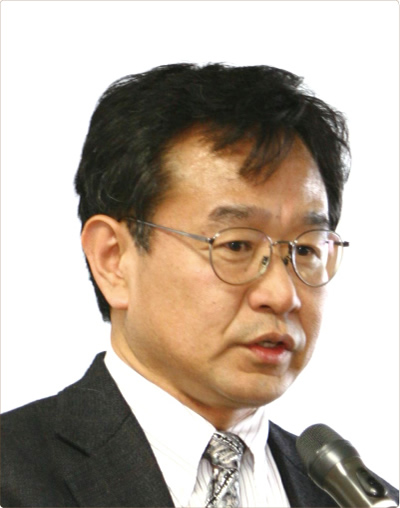Home > About Us > Sustainability Management > Sustainability Report > Sustainability Report 2015 > Comment
 Comment
Comment
<Third-Party Comment>
Comments on Reading the Kobe Steel Group's Sustainability Report 2015

Professor Shinichi Sakai
Director of the Environment
Preservation Research Center,
Agency for Health,
Safety and Environment,
Kyoto University
Profile
Shinichi Sakai
Shinichi Sakai acquired his doctorate from the Kyoto University Graduate School of Engineering in 1984. He worked as an assistant and associate professor at Kyoto University before becoming Director of the Center for Material Cycles and Waste Management Research, National Institute for Environmental Studies, Japan in 2001. In 2005 he became a professor at Kyoto University. In 2010 he was appointed director of the university's Environment Preservation Research Center and in 2011, after department restructuring, he assumed his current role. He was formerly chairman of the Japan Society of Material Cycles and Waste Management. He is also a special advisor to the Central Environment Council's Subcommittee on Waste Management and Recycling in the Ministry of the Environment, Japan. His publications include Waste and Chemical Substances (Iwanami Shoten Publishers).
When reading Kobe Steel sustainability reports from recent years, it can be seen that the Group has taken a strong turn toward making its CSR management and contributions to society through manufacturing easier to understand. The special feature at the beginning of the 2015 report, "20 Years after the Great Hanshin-Awaji Earthquake," gave an excellent overview of the history and results of this change, and of the Group's dedication to making real contributions. The feature clearly introduced the safety and disaster prevention measures, BCP (Business Continuity Plans) and aid programs carried out at the time, and the experiences before and after the disaster that have since become so integral to the Group's management. Natural disasters such as the Great East Japan Earthquake of 2011 and the recent volcanic eruptions have shown us that we are now entering a period where the scope and probability of damage from natural disasters is on the rise. We must also be aware of the increased risk of typhoons and flooding due to climate change. I expect the Kobe Steel Group's experience in overcoming such disasters together their stakeholders will be central to its successful future business development.
Recently, a lot of attention has been paid to Kobe Steel's power supply business. Some news reports explained that Kobe Steel also has plans to install two new coal-fired power plants (1.3 million kW) on the site of the former Kobe Works blast furnace and supply electricity to Kansai Electric Power. Kobe Steel also plans to construct a natural gas-fueled power station of similar scale in the Greater Tokyo Area. Looking at the relationship between energy usage and expected profits in the power supply business, this type of business appears to play a significant role into corporate management. I expect this business will be closely tied to energy consumption and greenhouse gas emissions, which are disclosed in the sustainability report, and I look forward to seeing more detailed explanations related to long-term development and sustainability on the renewable points in the future.
As an example of CSV (Creating Shared Value) initiatives, the 2015 report introduced technologies and products that contribute to a hydrogen-based society. I think everyone will agree that this is a clear move toward shared value, in line with the Japanese government's strategic approach to hydrogen infrastructure. However, I think a calm appraisal of whether or not a hydrogen society actually offers shared value, including life-cycle perspectives, is also necessary. Significant study is clearly still necessary in this field. I also believe that other Kobe Steel businesses that touch on society, such as their extensive materials business and other sectors related to the creation of infrastructure, could be recognized as CSV. More than anything, I hope that Kobe Steel will continue to hold true to the belief that the interests of all stakeholders are best served when the sustainability of a company and of society are closely aligned.


